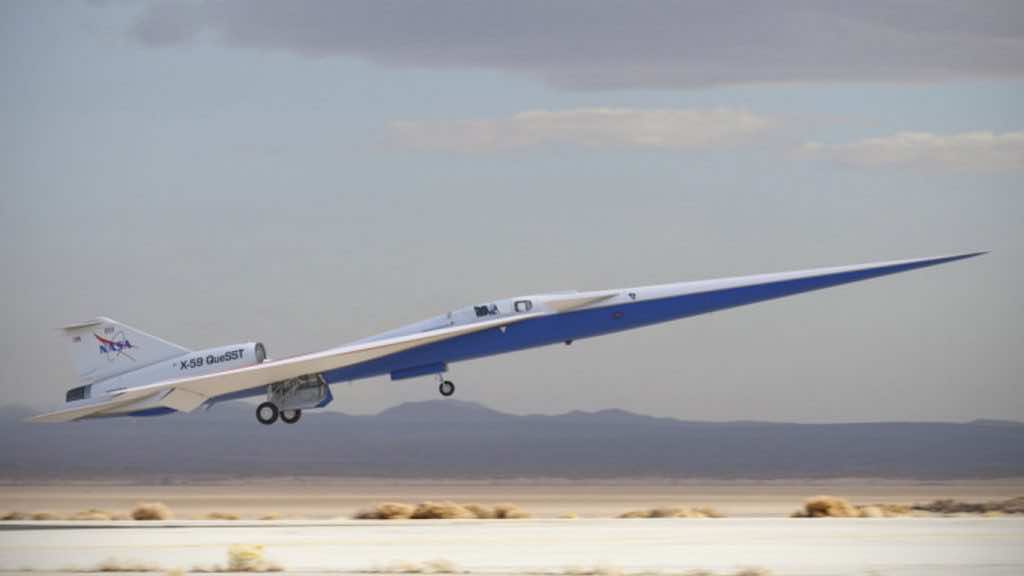NASA’s X-59 aircraft is designed to reduce the sound of sonic booms. This will allow supersonic aircraft to surpass the speed of sound (767 mph) while flying overpopulated areas.
NASA’s X-59 could revolutionize aviation by enabling supersonic aircraft to accelerate to those incredibly high speeds right after takeoff. The aircraft uses a narrow, slim 30-foot-long nose to lower the sound of the sonic boom.
NASA announced many upcoming milestones in its latest update. It included its plan to fly the Lockheed Martin-produced X-59 QueSST prototype “over select communities to gather information about how the public perceives the quiet noise the X-59 is designed to produce (early 2024).”
The first successful test was conducted at NASA’s Glenn research facility following its assembly and transfer to Texas in December last year. The next milestone will see NASA and Japanese space agency JAXA take independent measurements of a small-scale model before comparing results. The first flight is expected to be by the end of this year.
The U.S. space agency will then conduct acoustic validation flights in 2023, followed by the planned community overflights in early 2024. After that “NASA plans to deliver results of the community overflights to the International Civil Aviation Organization and Federal Aviation Administration in 2027,” the space agency said in its statement. “With that information in hand, regulators will be able to decide if a change should be made in rules that prohibit supersonic flight over land – a decision that would be expected in 2028.”
The senior vice president of Boom Supersonic Brian Durrence said his company aims to “remove the barriers to experiencing the planet.”
If NASA and other private firms succeed, we may soon see commercial supersonic airliners take to the skies once more. This will massively reduce travel times and reduce the barrier to entry for travelers worldwide while quietly breaking the sound barrier.

